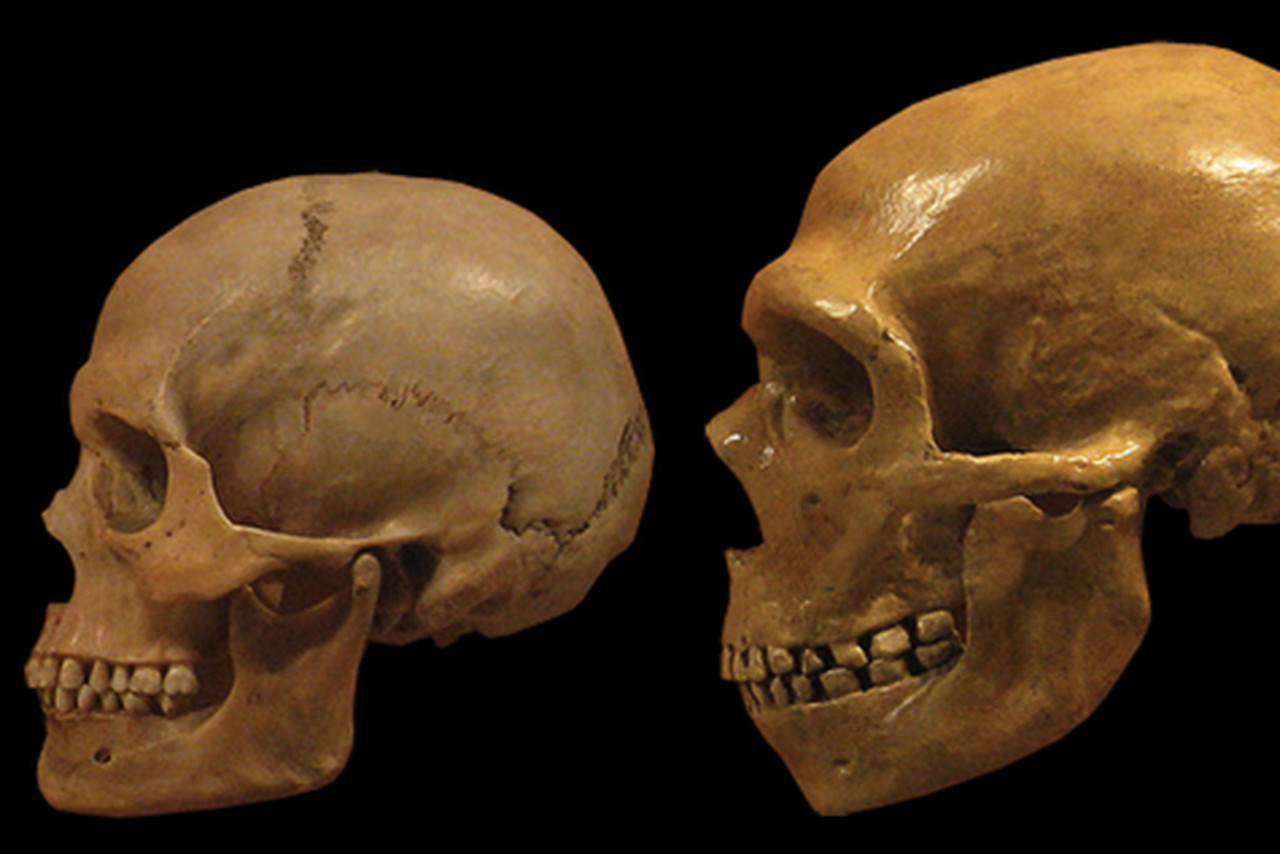http://www.theverge.com/
Some humans may have left Africa over 100,000 years ago

Between 1 and 7 percent of the Siberian Neanderthal’s genome was human —
inherited from people who migrated out of Africa. That suggests humans
and Neanderthals interbred several times. But it also alters our
understanding of human history. Since Neanderthals didn’t make it to
Africa, humans must have left about 50,000 years earlier than
evolutionary biologists had previously estimated. And that's big news,
says Sergi Castellano, an evolutionary biologist at the Max
Planck Institute for Evolutionary Anthropology in Germany and a
co-author of the study. This is "the first piece of genetic evidence" that some modern humans "were already out of Africa" 100,000 years ago, he says.
Humans left their mark on Neanderthals, too
Previous genetic analyses have revealed that humans interbred with Neanderthals less than 65,000 years ago, outside of Africa. As a result, Europeans and Asians inherited between 1 and 4 percent of their DNA from Neanderthals. And that DNA still has an effect on humans today; just last week scientists linked Neanderthal DNA to a wide range of human health conditions, including depression and nicotine addiction.
But until now, what researchers knew about Neanderthal-human interactions came from studying the flow of genes from Neanderthals to humans — and not the other way around. That's mostly because researchers didn't have the kinds of technologies or the appropriate Neanderthal DNA samples that would allow them to search in the opposite direction. This is the first time that scientists have been able to find evidence that humans left their genetic mark on Neanderthals as well, says Laurent Frantz, an evolutionary biologist at the University of Oxford who didn't work on the study.
A Siberian Neanderthal with human DNA
To arrive at these conclusions, Castellano and his team searched the complete genome of a Neanderthal discovered in a Siberian Cave in 2010. They found that certain regions of the Neanderthal's genome was closely related to those found in African human populations today. To estimate the timing of the interbreeding event, the researchers performed a statistical analyses based on the size and the clustering of the DNA fragments. This technique works because researchers know that when animals reproduce, their genetic material mixes with that of other animals; this causes individual DNA fragments belonging to one individual to break into smaller pieces as they're passed down through generations. In this particular case, the technique revealed that the Siberian Neanderthal's ancestors interbred with humans some 100,000 years ago.
Neanderthal toe bone (Bence Viola)
The researchers verified their findings by looking at the genome of a Denisovan — a member of an extinct human species that split off from Neanderthals some 380,000 years ago, after Neanderthals became a subspecies distinct from modern humans. Because Denisovans are more closely related to Neanderthals than they are to humans, their genomes can help scientists figure out the kinds of genetic mutations that are typical of these human subspecies. The analysis showed no evidence of the human DNA fragments in the Denisovan's genome, which suggests that these genetic elements were introduced in the Siberian Neanderthal's genome after Denisovans and Neanderthals evolved away from each other.
Castellano and his team also compared genetic material on chromosome 21 for the Siberia Neanderthal and two different populations of European Neanderthals. The scientists found no evidence of human integration in the European samples, which means that ancestors of the introduction of human DNA into the Siberia Neanderthal probably happened after the Siberian population branched off from the European Neanderthals, around 110,00 years ago.
"This is a big milestone."
The study "doesn't change what we knew before; it's building on it," Frantz says. Instead, it gives scientists a better understanding of how many times human and Neanderthals met. "This is a big milestone," he says.
Sarah Tishkoff, an evolutionary biologist at University of Pennsylvania who didn't work on this study, agrees. "This is really exciting work because it changes what we thought about human evolutionary history." But she also says that the the comparison of chromosome 21 means that researchers could be missing signs of human DNA integration in the rest of the European genomes. In addition, the study doesn't actually reveal much about the interbreeding event itself. Even though the Neanderthal in the study was found in Siberia, the human-neanderthal interactions probably occurred further south, Tishkoff says. But where exactly those interactions happened is a mystery. The fate of these adventurous humans is also unclear, Frantz says. "The population is probably partly extinct, and partly integrated in many different populations across the world."
The study raises a ton of questions, but for now the findings suggest that what we thought we knew about humans and Neanderthals is just one tiny piece of the puzzle. "There could have been multiple [human] migrations coming out of Africa, and some groups just didn't make it," Tishkoff says. Research like this helps "paint a picture of what the ancestry was, not just of modern humans, but of Neanderthals; and that picture was more complex than we thought."

No comments:
Post a Comment